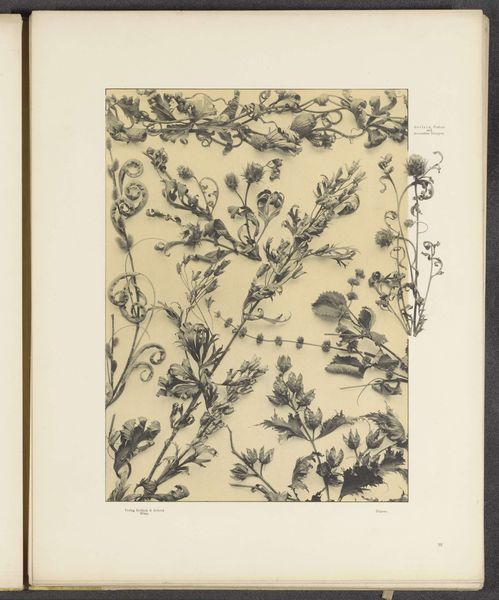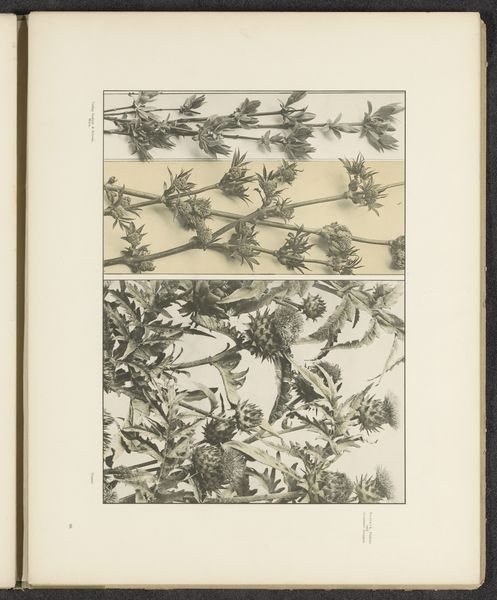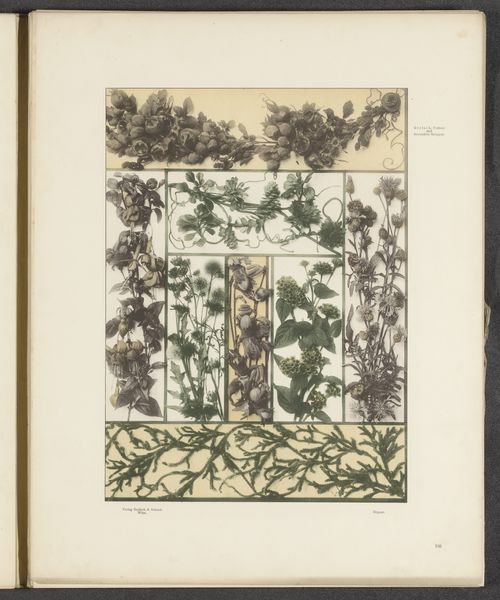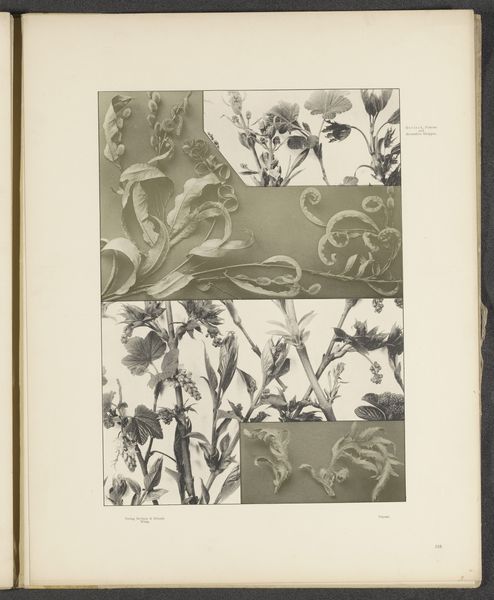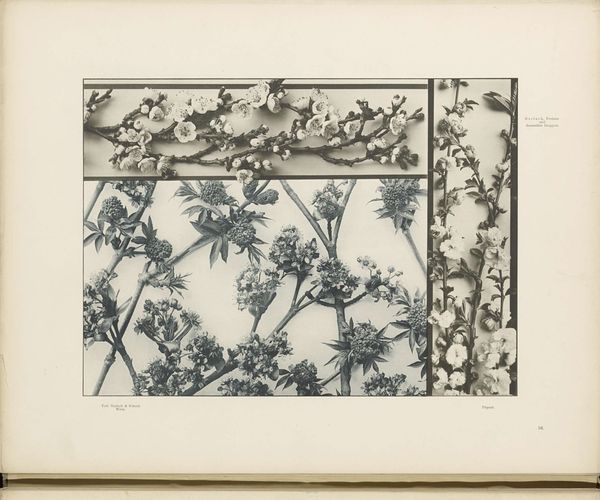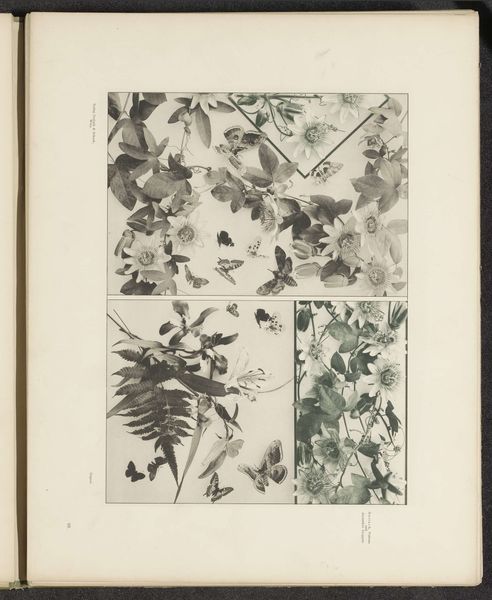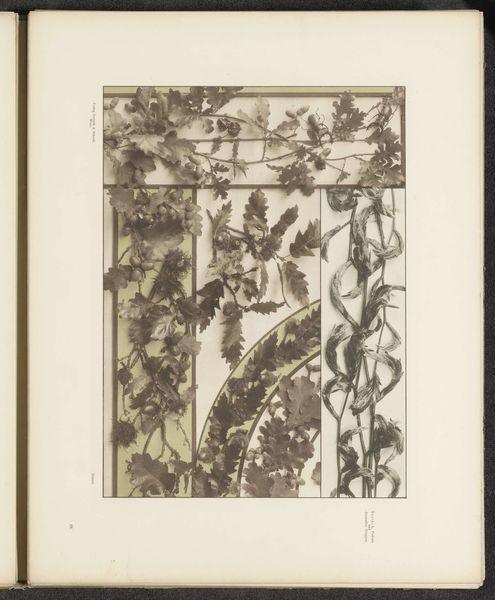
drawing, print, paper, ink
#
drawing
#
ink paper printed
# print
#
paper
#
ink
#
geometric
Dimensions: height 293 mm, width 214 mm
Copyright: Rijks Museum: Open Domain
Curator: I am immediately drawn to the repetitive use of floral patterns here, creates this kind of interesting rhythm. Editor: Absolutely. We’re looking at an intriguing print entitled "Vlakken met esdoornscheuten en pimpernootscheuten," which translates to "Surfaces with maple shoots and burnet shoots". Created before 1897, it showcases an elaborate use of ink on paper. Curator: What strikes me is how these seemingly natural forms are subjected to this very rigid, almost industrial-feeling composition. I wonder what was the intention behind it? Editor: Well, let’s think about it in context. During this time, there was significant interest in applying natural forms to industrial design and printing processes. I believe this artwork bridges that gap, using printed ink to elevate humble plant materials—maple and burnet shoots—into something aesthetically significant, and accessible to a wide audience. Curator: It is a bit contradictory, right? Mass-produced artwork portraying nature that probably involved some level of skilled labor creating this very meticulous representation. What were the social expectations on that sort of labor and expertise? Editor: Good point. These prints were probably used for a very practical end, like teaching tools. There was the public education movement blooming that tried to teach design principles to wider audiences using art, even printed ones. Curator: Right, so these prints end up functioning less as precious art objects and more like readily available learning aids or models. Editor: Exactly. Their value lies not just in aesthetics, but in the transfer of skills, the democratization of design. They tell us as much about printmaking technology and educational access in the late 19th century as about botany! Curator: When you view it through that lens, it provides an opportunity to rethink hierarchies between art, craft, and education, even questioning what art represents. Editor: Precisely. It highlights art as an agent of knowledge production and social mobility, not just decoration, expanding its cultural and practical relevance within a society. Curator: I’ll look at this in a totally new light the next time, keeping in mind about how these artworks become learning instruments. Editor: Me too, it is crucial to understanding art's multiple societal roles, not just as art.
Comments
No comments
Be the first to comment and join the conversation on the ultimate creative platform.


